To save myself riding for a few days in heavy traffic, I packed up my bike in Villa de Leyva and jumped on a bus for the four hour ride to Bogota. The bus terminal was on the opposite side of town from Candelaria, where I had a reservation at my hostel, so no problem with a taxi driver finding me and putting the bike in the back seat and me in the front. I sure am glad that I had that bag to pack the bike, as now it fits in even a normal, which here means small, cab.
Into a neighborhood covered in graffiti we found the hostel and I went inside the small portal to a large and cozy interior. Once again I had a private room, my most expensive of the trip so far. The room was modern, more like a Holiday Inn, less like some of my past stays. Breakfast and dinner served in house, and most importantly, tinto available at 0600 for the early morning guy.
I thought I’d start the big city with a tour, so joined a tour that left from my hostel.. We visited the fruit market first and I got to try a dozen fruits that I never tried before that are local. I never even heard of most of them before.
Colombians love soccer and bike racing, but the real sport of Colombia is Tejo. It was actually declared the national sport in year 2000. It involves steel projectiles, gunpowder, and beer. Doesn’t that sound like a fun sport to teach your kids culture? I got to play this sport using the first two ingredients, skipping the beer (it was ten AM). What you do it throw the solid steel disks attempting to hit the orange tabs of gunpowder while getting your projectile to stick to the clay background. There is a scoring system depending on which tab of gunpowder you hit or whether your disk sticks to the clay. Either way, a beer is necessary for each player to drink after every throw of anyone. Two goals: try to score the most points and try not to get a concussion if you drift into the field of play.
I played the game with our group of tourers. I think I kind of won, no head dents!
No beer, but we did get to sample Chicha, the drink made from fermented corn.. Historically, the indigenous women, only the smart ones, of the village chewed the corn and spat the corn and saliva into a bowl. Only the smart ones, because they passed on their wisdom with their spit. Then the bowl was buried in the cool ground for 10 days and the fermentation was complete and ready to pass the results to the imbibers.
In the 1820’s a researcher showed the positive qualities of the drink, sort of a cross between beer, kombucha and juice. It thrived a a cheap alcoholic drink until just by coincidence, in 1889, when the German immigrant Leo Koop started a major brewery in Bogota, it was found that chicha was dangerous to drink and it was deemed bad for you until completely banned in 1949 by the government, a ban that technically still exists today, but not enforced. It was supposedly banned because it made people ignorant and violent and caused a disease that deteriorated the body and mind.
Our guide explained that it is a favorite drink of college students to get drunk on this for very little pesos. She felt fairly sure that it is no longer produced by the spit of the smart women. Did that mean that the dumb women chewed it or that chewing was no longer part of the process? I didn’t find out. Not sure whether it was healthy for me or made me ignorant and violent. Maybe you need to drink more than an ounce.
As we toured the main square of the government buildings we saw the fronts draped with netting to protect against windows being broken from protesters two days before. I actually got a warning from the US State Department warning Americans to stay away.
I met Robert at the hostel. He was headed the same way as myself, to get to the top of Monserrate mountain, which is over 10,000 feet above sea level. There are two ways to get to the top: hike it up 1600 steps or ride the cable car up. Robert happened to be a structural engineer and after seeing the quantity of people they mashed into the cable car, which was significantly more that he thought it was designed for, opted to walk. I appreciated his perspective and up we hiked.
My Lonely Planet guidebook warned of thievery on the way, but on this Sunday morning we found a huge crowd of people and both police and medical personnel to attend to the heart attacks from the efforts of otherwise inactive people. The walk was strenuous and hot, and I must admit that I kept Robert from progressing faster as he waited several times for me to catch my breath.
This summit goes back to the Muisca people of pre-Colombian times, who set it up to perfectly have the sun rise at the June solstice directly behind the structures on top. Along came the Spanish Catholics who put a shrine at the same location and supposedly, but touching the shrine, one can be healed of ailments.
Wow, what views and now easier to understand the population of Bogota at 11.5 million. It seems to go on forever. Take a look at the photos.
The noise and chaos of a city this size was too much for me, so I booked a short flight to get Armenia, a mid size city in the western range of the Colombian Andes. Time to get back on the bike.
Sending love,
Charley

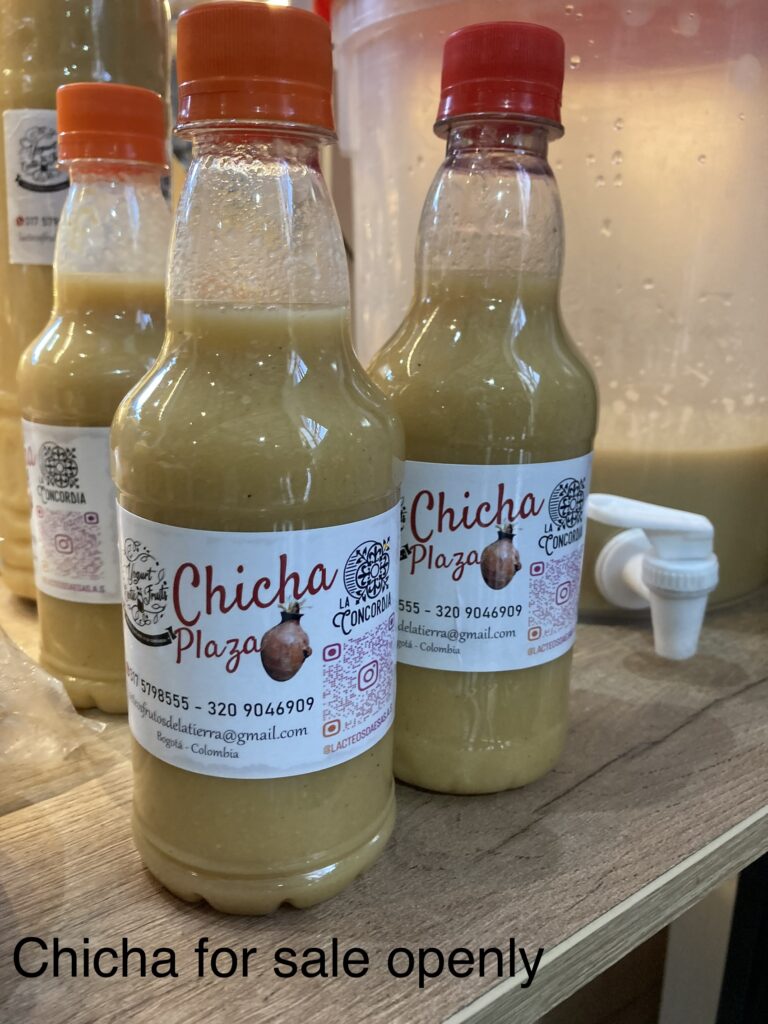
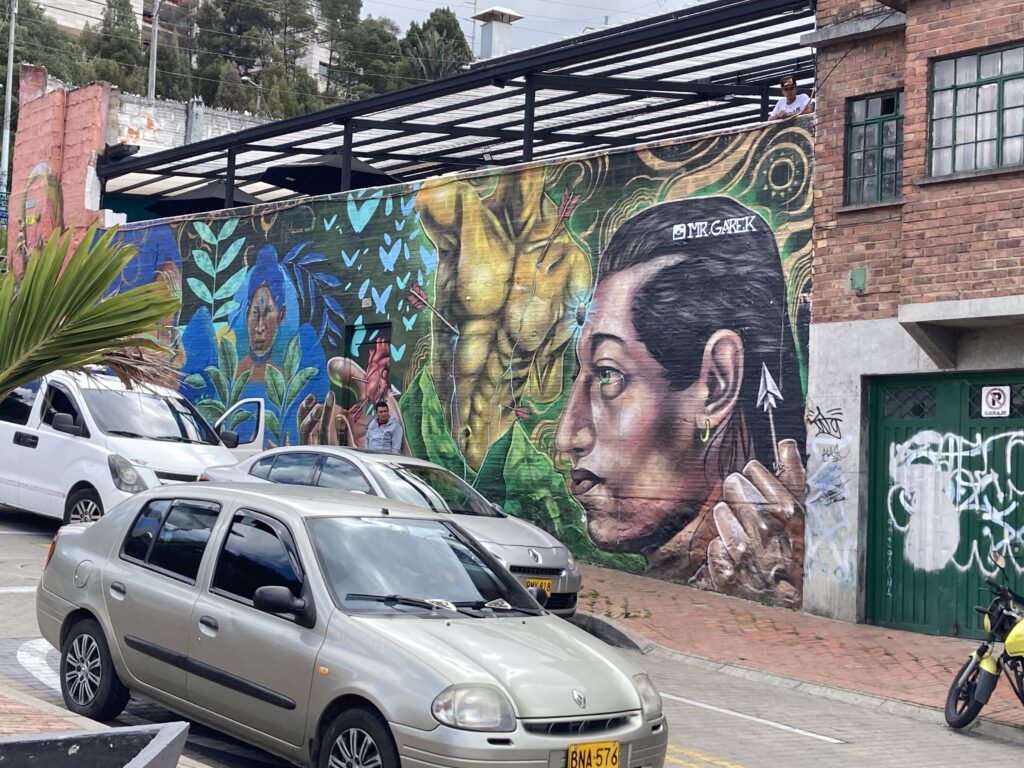

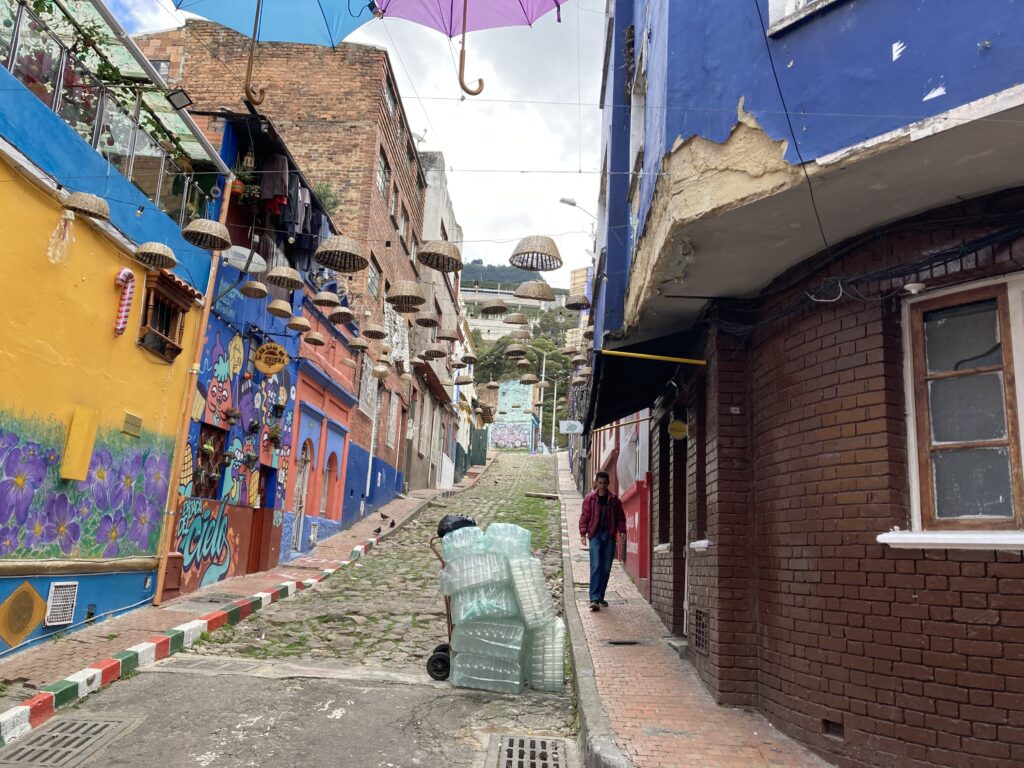
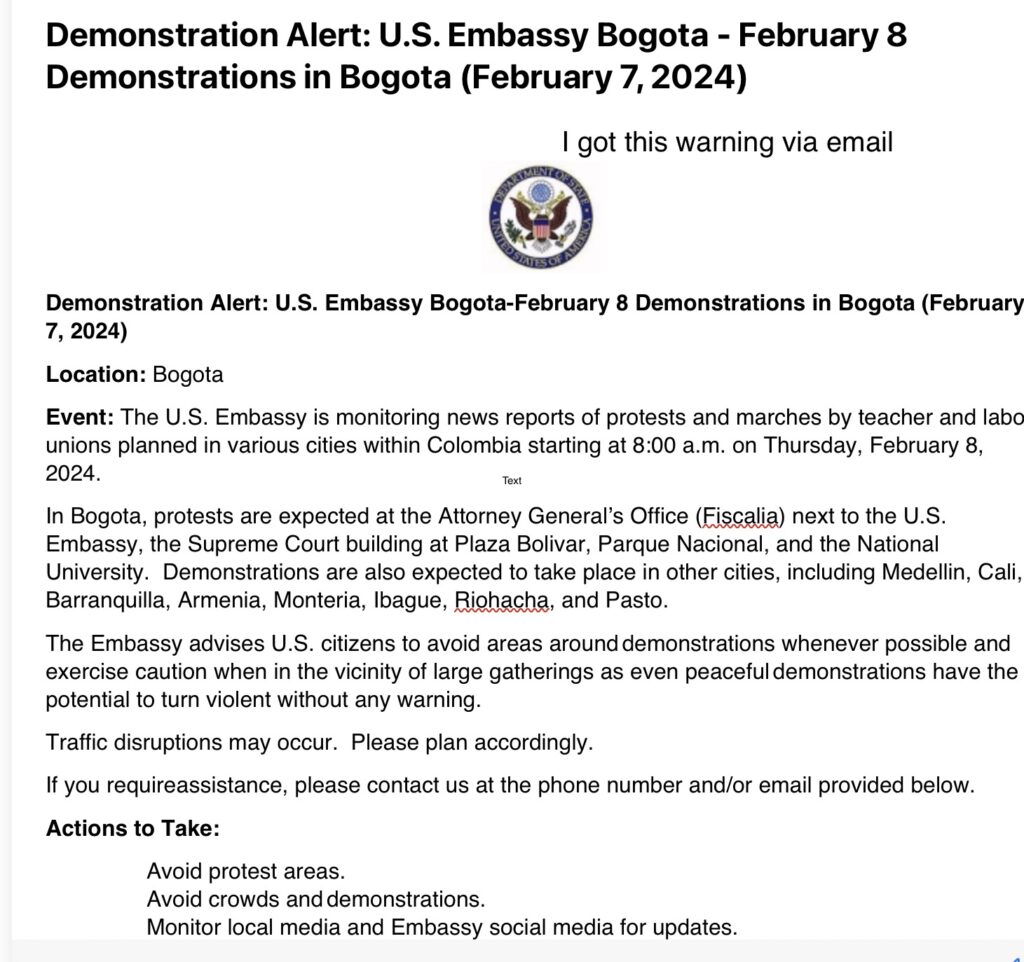
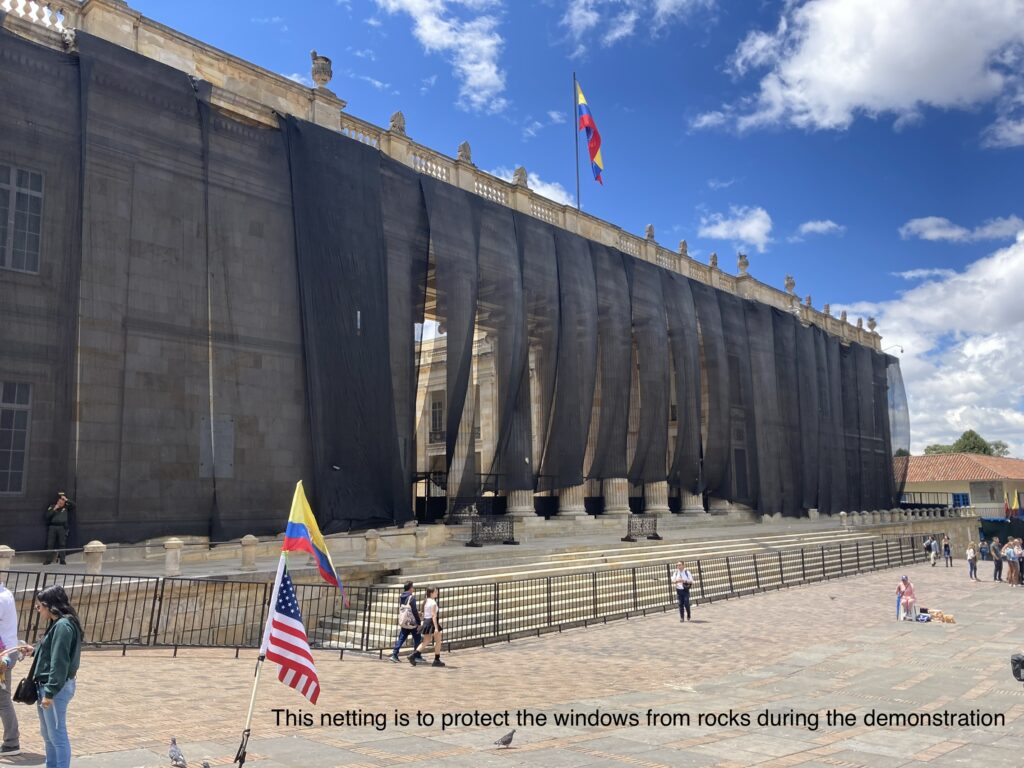
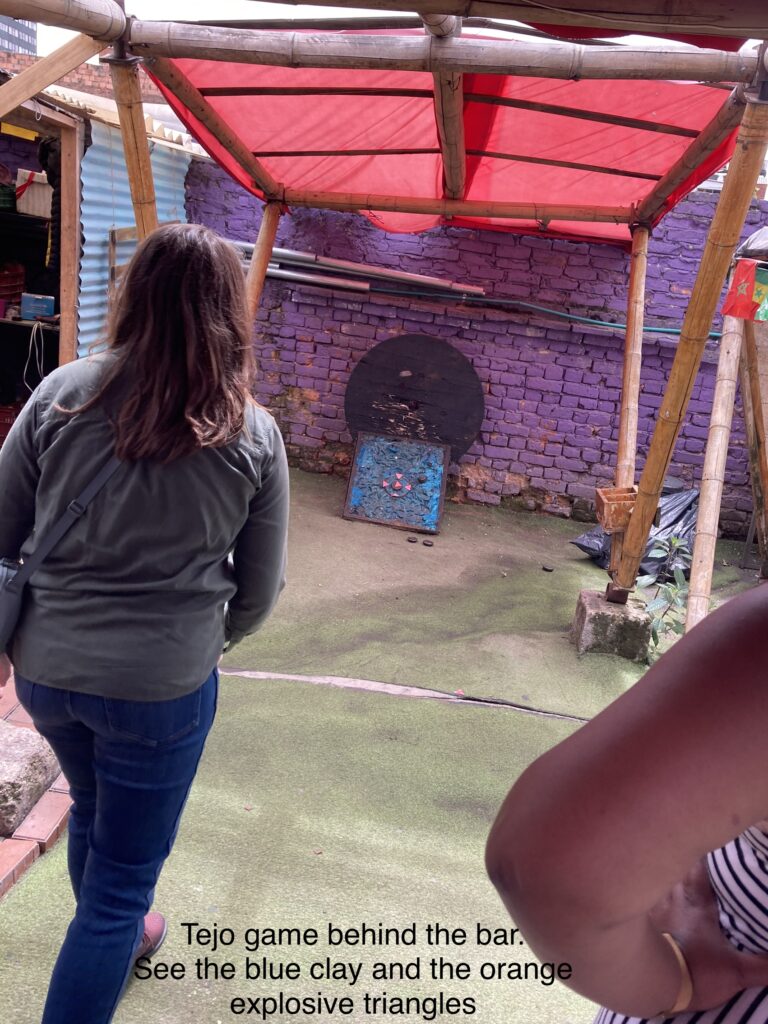
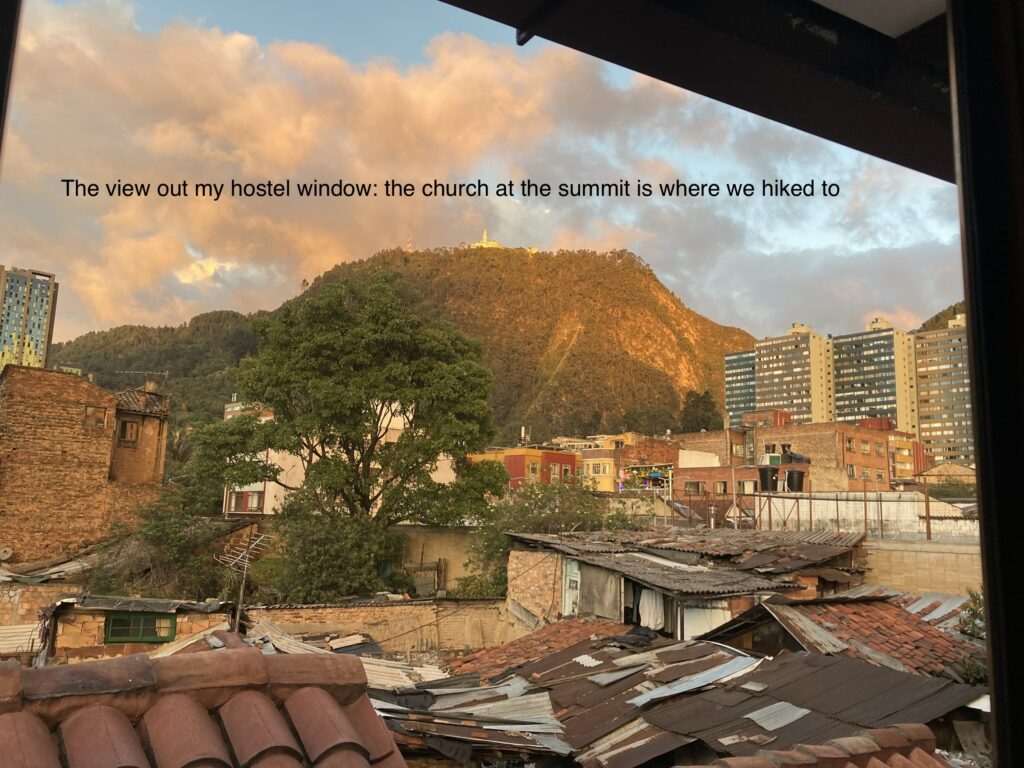
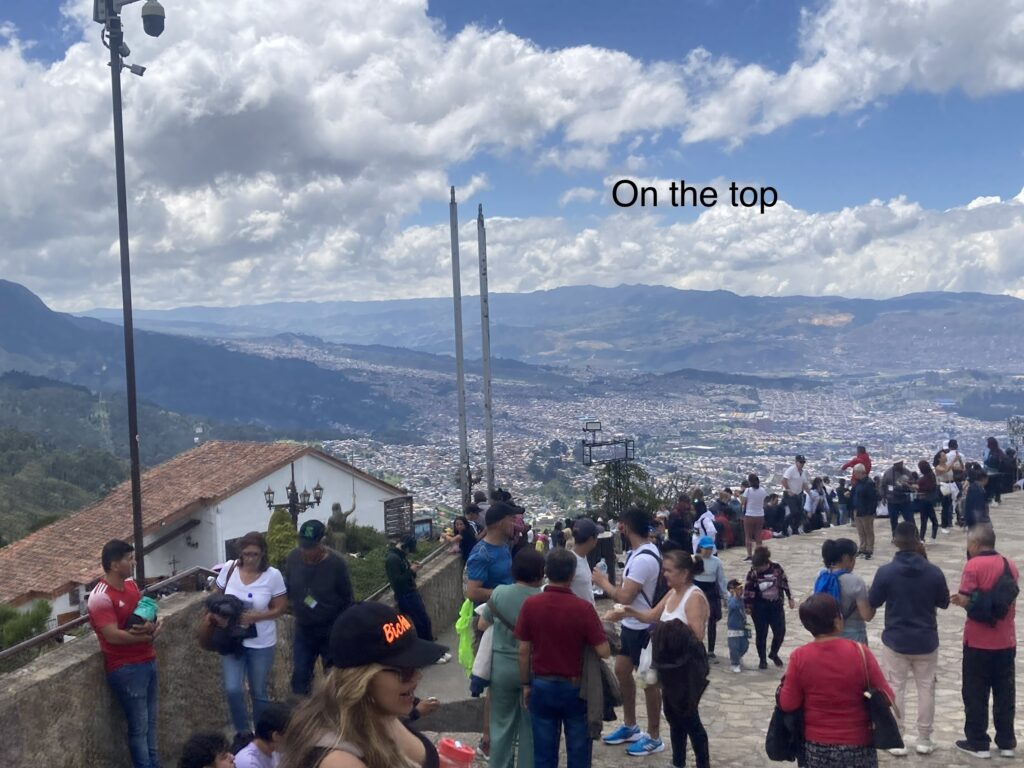


Hi Charley,
Fruit looks good. Chicha not so much.
Love,
Karen
Thanks for the great posts! This is a wonderful experience. I’m glad you are sharing it with us.
Brad
It seems I remember a similar drink in Peru, chewing, spitting and fermenting. Also, out of favor I believe. Gotta stay out of those big cities.
You seem to be enjoying what you’re doing and what you are eating. Eating is a big part of traveling.
All caught up! I’m sure enjoying your adventures!